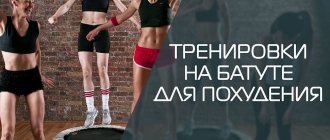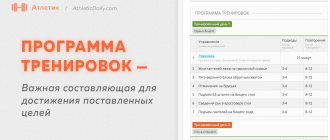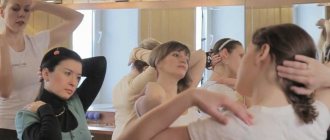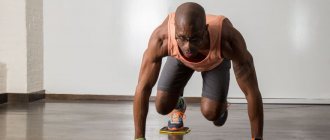Health has always been the most valuable thing for every person. And the health of our children worries us even more. Every parent wants their child to be strong and strong. To do this, it is necessary to strengthen his immune system from early childhood, to help the child’s body fight various viruses and infections. A proper diet, hardening, and, of course, active sports .
In this article we will take a closer look at the types of children's fitness .
Today, children's fitness is very popular - workouts designed for children from three to twelve years old. The physical activity offered to children in such classes is aimed at the proper development of the child’s body.
As in many other sports, consistency, regularity, taking into account personal characteristics, and the absence of fear and negative emotions are essential in fitness.
What is the difference between children's fitness?
Unlike the usual sections divided by type of sport, children's fitness is a mixed set of exercises from different types of physical activity: aerobic, strength, gymnastics, choreographic and even elements of wrestling and yoga. Group classes are conducted in a playful manner under the guidance of a children's trainer and do not require strict adherence to the program.
As such, there is no selection for the fitness section for children: children of different ages and levels of physical fitness can participate. Groups are often formed taking into account the health characteristics of young athletes.
What exercises do the training programs consist of?
It is impossible to name one specific exercise program. Children's fitness is more of a combination of various general strengthening exercises. The lesson may include both posture exercises and exercises with a skipping rope, choreography, swimming and other types of physical activity.
In general, there are a great variety of programs for children’s fitness, and you have the opportunity to choose exactly those activities that are most suitable for your child’s age and temperament and that will allow the child to realize his or her maximum potential.
What are the benefits of children's fitness?
A child needs active movement every day, and the obvious benefits of fitness will help motivate him to do regular exercise.
- Health is improved: the endurance of the heart and blood vessels is trained, proper breathing develops, and mental stress is relieved.
- Children's fitness classes help comprehensive development: improve memory and attention, reaction speed and coordination of movements.
- Regular exercises develop all muscle groups, improve flexibility, and form a slim, beautiful figure.
- Physical activity provides an opportunity to relax and release pent-up energy, which is especially important for hyperactive children.
- Problems such as flat feet or curvature of the spine in children can be easily corrected with regular exercises.
- Physically developed children are less likely to gain excess weight in the future and related diseases (obesity, hypertension, diabetes).
- Group classes help shy children find common language with their peers.
Children's fitness and sports sections. What is the difference?
Children's fitness and sports sections have a number of differences. Firstly, fitness is safer; it is almost impossible to get injured during classes. Secondly, in children's fitness there is no such physical stress and psychological pressure as in sports sections. In addition, all children are accepted for children's fitness, but sports sections often have selection based on physical fitness and other parameters. Therefore, children's fitness classes are more suitable for the fragile psyche of children, since children are in equal conditions and can show their potential in classes.
It is worth noting the fact that in children's fitness you can choose for your child exactly the program that he will like. After all, all children are different and have different interests. Some people like active games, others like dancing, and still others like repetition exercises. In addition, recently, logoaerobics techniques have been used in children's fitness classes, when children repeat specially selected poems or tongue twisters while performing a particular exercise. This develops speech and memory in children.
Fitness at different stages of child development
Any classes in children's fitness take into account the age characteristics of the child, focusing on the characteristics of children's health and temperament. Still, there are some general recommendations related to the age of the child.
Junior schoolchildren
Children over 10 years old can be offered a more serious load than simple outdoor games. Many children are already able to master the correct technique for performing strength exercises and appreciate the competitive element of children's fitness. Children willingly imitate adult athletes, so strength equipment is added to the main functional training program. Optimal classes are 2-3 times a week for 30-40 minutes.
For younger students, learning through play is still exciting. THE BASE fitness club has developed an original children's program Antigravity Kids. Somersaults, flying and other play exercises in a hammock are useful not only for the development of physical strength and plasticity. At the same time, complex brain work takes place to improve concentration, overcome fear and self-doubt.
Children's dance classes in various styles of Dance Kids will bring a great mood and health benefits. In addition to correct posture, flexibility, and muscle strength, musicality and a sense of self-confidence develop.
Teenagers
From about 14 years old, fitness classes take on an almost “adult” character. But the load on a teenager’s body should still be gentle. The program is developed taking into account the characteristics of such a difficult transition period in the life of each child. At The BASE club, teenagers now have access to 23 workouts for every taste.
For example, Crossfit Teenagers general strengthening classes help teenagers learn to control their own bodies and develop strength and endurance. It is also excellent preparation for other sports activities.
In order to more specifically develop coordination of movements, agility and flexibility, Brazilian Jiu Jitsu classes in our club are recommended. In addition, martial arts perfectly build character and give self-confidence, which is so necessary for any teenager.
Classes at the Cardio studio according to the Good Bye Fat program! help remove excess weight, which often appears during complex hormonal changes during adolescence. Run For Shape strength training adds a competent load on all muscles and makes the body slim and resilient.
A little about training
All sports organizations that provide children's fitness services provide visitors with the necessary equipment. In the first days, the instructor conducts familiarization and full instructions.
For schoolchildren, that is, children from 6 years old, new opportunities are opening up. Their training program includes new equipment - children's exercise equipment. At this age, the child is predisposed to develop flexibility, endurance, speed, strength and coordination. Therefore, special simulators will be most appropriate here. Training to work with them is mandatory.
All classes begin with a warm-up. At this stage, children are taught to walk in place, run, and squat. Next, variety is added to the training with dance exercises. They are needed to develop rhythm and ear for music in children. The main block focuses on strengthening the muscles of the legs, back, abs and arms.
Contraindications to classes
Before starting fitness classes, consult your doctor - this is a rule for both adults and children. If a child has chronic diseases, the program must be adjusted taking into account these characteristics.
There are no absolute contraindications for children's training. For example, with some diseases of the respiratory or cardiovascular system, intense aerobic exercise should be avoided, but other activities are not canceled. A weak musculoskeletal system should not be loaded with strength exercises, and at the same time it would be good to strengthen it with gymnastics.
Together with a doctor and a certified trainer, it is easy to choose the optimal fitness program for your child that will help him grow up healthy and strong.
What is fitness for?
As a rule, there are no specific indications for participation in fitness classes, but the following can be roughly distinguished:
- Sedentary lifestyle. If a child does not move, but sits at the computer or phone all the time, and participation in active and active games is alien to him, then fitness classes are an excellent solution. After all, a decrease in physical activity leads to impaired physical development and the occurrence of certain diseases.
- Health problems. A specially selected or developed training program helps solve some problems, for example, flat feet, decreased muscle tone, etc.
- Weak immune system. Regular attendance at workouts improves your health and overall well-being.
- Hyperactivity. If a child does not sit still, always runs and jumps, and shows excessive curiosity, then during sports activities he will be able to direct his energy in the right direction and throw out its excess.
- Lack of communication skills in communicating with other children. So, if a child, for certain reasons, does not attend kindergarten or cannot find a common language with peers, then group classes contribute to the development of communication skills, and under the guidance of an experienced trainer, the child will quickly join the team.
The D'ATHLETICS fitness club in St. Petersburg employs certified trainers who can choose the optimal course of classes in accordance with the characteristics of each child. In addition, we provide children's and group training in various areas, personal training and functional classes.
dathletics children children's fitness development recommendations
Children's fitness - what is it?!!
Olga Yurova
Children's fitness - what is it?!!
Children's fitness - what is it??
All parents want their kids to grow up healthy, strong and athletic. It's no secret that regular physical exercise has a beneficial effect on both health and mood.
Today, many sports clubs offer training programs not only for adults, but also for children. What is children's fitness , at what age can a child be entrusted to a trainer and what should special attention be paid to, we will tell you in our article.
At what age can you bring your child to classes?
Most children's clubs and fitness centers are open to children from 3 months. Children are offered to study in groups with their parents, and, if desired, individually with an instructor. “What can little ones learn at such a young age?” - many are surprised.
Often parents focus on the child’s education and development from birth, from about 3-4 months, and rightly so. This is exactly the age when you should begin to instill a love of creativity and the world around you, develop fine motor skills and lay the foundation for independence.
One of the most important factors influencing development is communication with other children. The baby’s stay among “their own”
pushes you to achieve new goals, instills important communication skills.
Activities in water and techniques using soft modules are very popular for children; yoga for mother and baby; acquisition of balance skills, development of fine motor skills, formation of memory and speech; exercises on fitballs.
Training program for kids. What are the possible contraindications?
Scientists have established an interesting fact: in the first year of life, the brain mass of a newborn increases as rapidly as the muscle mass. This means that the formation of nervous reactions and mental development directly depend on physical development.
The more information a child receives, the more productive the brain is, the more intense the formation of neural connections. Therefore, during classes, children's fitness instructors (within reasonable limits)
.
Classes at the club include developmental programs for ages: from 3 months to 1.2 years, 1.2-2 years, special programs for children from 2 to 4 and from 4 to 6 years.
Most sports clubs do not forget about schoolchildren, creating interesting courses for them aimed at developing specific skills. This could be dancing, martial arts, drawing, yoga, hammock classes, etc.
There are practically no contraindications for children's fitness But, if a child suffers from chronic diseases, it is important to choose the right program that will be useful for improving health. For example, if a child has asthma, it is better to exclude aerobics and instead increase the number of yoga sessions. If children have problems with the spine, strength exercises are contraindicated, but aerobics and swimming will be useful.
To ensure that playing sports does not harm your baby, be sure to consult with a specialist: an instructor and a doctor. You need to know for which diseases physical activity should be limited or completely contraindicated.
Is training different for younger children?
and middle school age?
Children of primary school age have an unformed musculoskeletal system. From being forced to sit for long periods of time at a desk at school and at home doing lessons, a student gets a curvature of the spine. Therefore, all classes for this age category include sets of exercises aimed at developing and maintaining correct posture.
Middle school age is the period of puberty, the skeletal system grows much faster than muscle tissue. The child gets tired even from minor physical activity. All classes include exercises to develop coordination. For girls, the emphasis is on flexibility and mobility, and for teenage boys, on strength exercises using various equipment.
How to determine a child's abilities and inclinations? Which workouts should you prefer?
Sport should bring pleasure, only then will it be useful! And the talented staff of sports institutions will always help you choose an interesting direction of training, taking into account individual abilities and inclinations.
Many parents are sure: the sooner you introduce sports into a child’s life, the easier it will be to achieve good results. This is only possible with a professional approach. Fitness center specialists which section is best to send your child to, taking into account his age and physiological characteristics, and preparing him to become a “champion”
Experienced trainers and instructors will take care of it.
Are there only sports activities?
in a children's fitness ?
A good sports club offers a wide variety of children's programs , ranging from the development of fine motor skills and ending with the improvement of throws and grabs in judo - “for every taste”
.
In addition to sports, activities belonging to the “Fan”
to relieve psycho-emotional stress: games and dances, theater studio, music classes and much more.
What are the main health problems in children and adolescents that coaches have to solve?
All parents know how important it is for their child to be healthy and strong; this is a guarantee that the baby is cheerful, calm, and the key to effective and rapid development. Regular sports activities improve health, develop strength and agility, promote the development of motor skills, prevent flat feet and scoliosis, improve flexibility, develop attention, and improve sleep.
Exercises have a positive effect on the emotional state - a sports child is more optimistic and less susceptible to stress. During training, children throw out pent-up energy, learn to communicate and play with each other.
Harmonious development begins with properly selected physical activity. This is how correct gait, beautiful posture, even handwriting, and clear speech are established.
Can exercise replace classes at a club?
Morning exercises are the key to good mood and good health. The goal is to bring the body into working condition after sleep, increase tone and mood.
Exercise is not intended to train the body. It includes flexibility, mobility, and breathing exercises.
Children's activities at the club have a number of advantages compared to regular morning exercises. First of all, this is a well-chosen sports program taking into account the child’s age, level of development and physical fitness. Children's fitness is a great opportunity to throw out pent-up energy and have fun and useful time with friends. This is the organization of physical education and health activities in a playful way. Walking, running, cycling, outdoor games, tennis, aerobics, gyms, sports activities that include elements of choreography, gymnastics, aerobics, yoga help to acquire health, beauty and harmony.
Is it true that playing sports helps your child?
become more independent and responsible?
Sport disciplines! Almost everyone knows this unspoken truth. Leading an active lifestyle is extremely useful, because sport helps to use time wisely, effectively resist laziness, appreciate the results achieved and strive for the best in everything!
In addition to strengthening moral and volitional qualities, one should not forget about other advantages of a sports lifestyle: improved appearance, increased immunity and level of functional fitness.
Advantages and benefits of fitness for children
Children's fitness is definitely beneficial, and not only for health. He helps:
- learn to establish communicative connections with peers;
- learn what individual and group discipline is;
- spend “extra” energy;
- develop the musculoskeletal system harmoniously;
- strengthen the immune system, heart, blood vessels, lungs and vestibular apparatus;
- master important motor skills;
- learn to control your body;
- be able to quickly reproduce unfamiliar complex coordination movements;
- improve flexibility and speed reactions of the body;
- develop a sense of rhythm and the ability to move, falling into musical beats;
- strengthen metabolic processes and normalize body weight;
- promote the prevention of postural disorders and flat feet;
- lay the foundations and instill a love for leading an active lifestyle in the future.
In addition, during fitness classes the formation and manifestation of emotional and volitional qualities occurs. Observing a child, assessing his behavior and physical characteristics will allow the coach to give advice on the advisability of practicing a particular sport, or suggest which area of fitness is suitable in the future.

General recommendations
Classes intended for children aged 3 to 7 years should not last longer than half an hour. Training is carried out in specially equipped rooms with good ventilation and the absence of traumatic objects.
The frequency of visits to the gym depends on the age of the baby:
- Children under three years old usually train no more than 1-2 times a week (30 minutes);
- 3-6 year olds can study three times during the same period of time;
- It is recommended for teenagers to train the same amount, but at the same time the duration of their stay in the gym increases from half an hour to 40-45 minutes.
Which form of fitness is best? Everything here is individual and depends on age. Thus, dance and game classes are more suitable for preschoolers, but for primary and secondary school students, more complex training programs should be selected and physical exercises designed to specifically develop their musculoskeletal system.
Experts have differing opinions regarding strength training (i.e., lifting weights) for teenagers. But most of them agree on one thing: improper performance of basic exercises (squats with a barbell, deadlift, chest press) can affect the health of the guys and significantly affect the subsequent formation of their musculoskeletal muscles.
It is better for girls and boys under the age of 16 to replace strength training with bodyweight training (horizontal bar, push-ups, fitness aerobics) and cardio exercises - running, jumping, etc.

Features of the program
The training includes three stages, the implementation of which is mandatory.
Warm up. This stage is necessary to prepare the muscles, joints and heart for the main load. Warm-up, as a rule, includes simple general strengthening exercises aimed at warming up all muscle groups.
The main part of the training includes performing exercises using special equipment. The course of the lesson depends on the type of fitness program (step, yoga, water aerobics, etc.).
Hitch. This is an important part of the workout, which allows you to restore breathing, relieve tension and normalize your heart rate. It usually takes place in the form of a game.
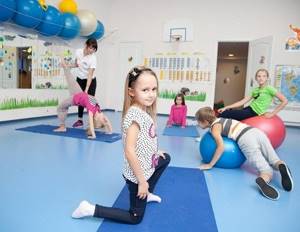
Main areas of children's fitness:
- Logo aerobics. This type of fitness involves performing exercises with the repetition of small poems or sounds. Such classes train not only physical strength and endurance, but also the speech apparatus.
- Capoeira. A popular activity, a unique combination of martial art and dance.
- Animal aerobics. This type of fitness is suitable for kids. Its essence is to perform exercises that imitate the movements of animals.
- Fitness classes using a fitball, massage mat or ropes.
- Water aerobics.
You don't have to go to a gym to exercise. You can perform the exercises at home, but this should only be done with a trainer and under his close supervision. The downside to home workouts is that they don't help develop social skills.



